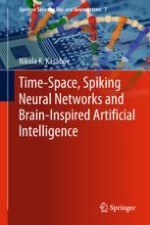2019 | OriginalPaper | Chapter
19. Deep Learning of Multisensory Streaming Data for Predictive Modelling with Applications in Finance, Ecology, Transport and Environment
Author : Nikola K. Kasabov
Published in: Time-Space, Spiking Neural Networks and Brain-Inspired Artificial Intelligence
Publisher: Springer Berlin Heidelberg
Activate our intelligent search to find suitable subject content or patents.
Select sections of text to find matching patents with Artificial Intelligence. powered by
Select sections of text to find additional relevant content using AI-assisted search. powered by
